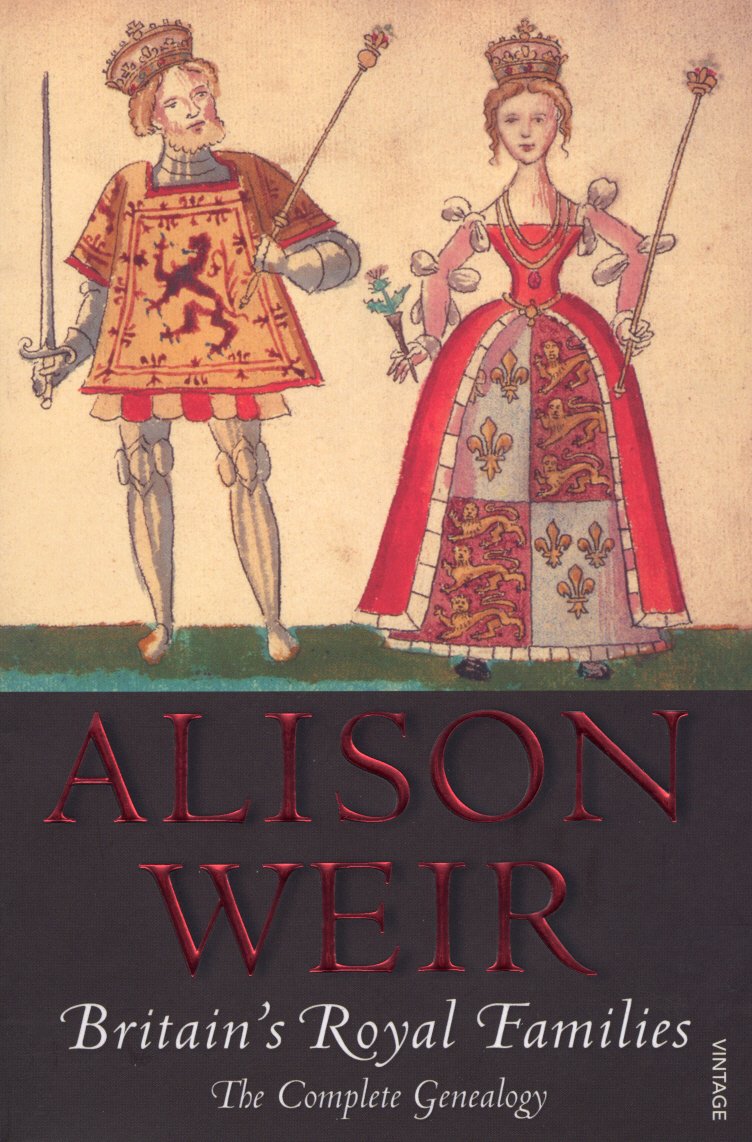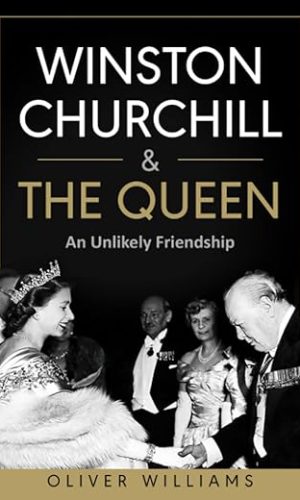Britain’s Royal Families: The Complete Genealogy
£9.60£10.40 (-8%)
Fascinating and authoritative of Britain’s royal families from Henry VIII to Elizabeth I to Queen Victoria, by leading popular historian Alison Weir
‘George III is alleged to have married secretly, on 17th April, 1759, a Quakeress called Hannah Lightfoot. If George III did make such a marriage…then his subsequent marriage to Queen Charlotte was bigamous, and every monarch of Britain since has been a usurper, the rightful heirs of George III being his children by Hannah Lightfoot…’
Britain’s Royal Families provides in one volume, complete genealogical details of all members of the royal houses of England, Scotland and Great Britain – from 800AD to the present. Drawing on countless authorities, both ancient and modern, Alison Weir explores the crown and royal family tree in unprecedented depth and provides a comprehensive guide to the heritage of today’s royal family – with fascinating insight and often scandalous secrets.
‘Staggeringly useful… combines solid information with tantalising appetisers.’ Mail on Sunday
Read more
Additional information
| Publisher | Vintage (18 Dec. 2008) |
|---|---|
| Language | English |
| Paperback | 400 pages |
| ISBN-10 | 009953973X |
| ISBN-13 | 978-0099539735 |
| Dimensions | 12.7 x 2.49 x 19.69 cm |










by Amazon Customer
alison weir has opened up british history in a chronological list of all the monarchs, wives and family members from alfred to elizabeth ii. it is easy to understand the relationships and the conflicts between the major players of history.
i have read the book several times in one go and also use it for dipping in and out of to explain history biographies i am reading.
i use this book as a guide to my reading list. i have started at the beginning and have bought a biography of every monarch and their spouse and other major characters. i use the book as a catalogue of my collection.
this book has been so useful on days out when someone says “so what did this king do then?” that i have bought it on kindle too.
every school kid should be given a copy of this book on their first day at high school, it would make history lessons so much easier.
i cannot recommend this book highly enough, please buy it today
by Dan
This excellent work of reference is great for any history buff, royal watcher or for the home library of any school child as a homework tool. It contains the vital information about the parents, grandparents, children and grandchildren of every monarch of Wessex, England, Scotland and the United Kingdom, and some other descendants in the direct line of succession who didn’t directly succeed themselves, since King Egbert of Wessex (b around 769/80) and King Alpin of Scotland and of Kintyre (who succeeded to those Kingdoms in 834.
One thing that is worth mentioning, is that when the author, Alison Weir, was researching this and is some cases found more than one possible date for any event, or name or even identity for any particular individual, she chose to be completist and to include all the possibilities in this work, with an indication of what was likely or unlikely to be correct, as the case may be, so for those conducting a very academical or genealogical study of the subject of royal genealogy or history this should be treated as a very good starting point rather than sole reference, but this work nonetheless meets the needs of most people who would want to buy and refer to it.
by Stephen M. Bedford
I think that this is an excellent book, very well written. It gives the basic information about all members of the Royal Families going back to pre Norman times. There is also some useful information given about many of the Royal Family members. This book took Alison Weir about 22 years to write, and looking at the list of reference works she has reviewed, this is not surprising. On several occasions some information has been based on what she believes is most llikely to have happened, where there is little or no firm proof. I find this very helpful as this is not generally found in other reference books I have read. It is only, I guess, through her extensive research that she has been able to come to some of her conclusions. One other author has been involved in producing a similar but more involved work over the last few years but, within a few weeks of its anticipated release date, the release was cancelled, and I have heard nothing to make me believe that it will ever be published. For anyone interested in the history of British, not just English, Royal families, I believe that Alison Weir should be hugely congratulated for finishing what must have felt like a life’s work. All of this can perhaps be summarised in one word. “Brilliant”.
by SCharles
I have chosen this rating because this is a reference book of the highest quality. Did you know there was a King Colin of Scotland? It is great for sorting out all those people you were not sure actually existed or who was related to who. It is very difficult to use on the kindle and would be much better in book form. I would not recommend the kindle edition as this does not always read like a book but is in large part a series of lists of monarch, spouse and offspring. Ideal for students to flick back and forth.
by Armindo Gomes
A lot to learn, but to someone who’s into this type of reading or subject, very good. My wife finished the book within a week. After the visit to Hampton Court and seeing her interest in to the history of the Kings and Queens, I thought the book would be a good present. Bullseye.
by Nicholas Casley
As far as I am aware, this is the most detailed overview of the genealogy of Britain’s royal families in an affordable volume. Commencing with King Egbert of England and King Alpin of Scotland, Alison Weir traces the descent of all legitimate offspring of each monarch as well as the records allow. The ancient Welsh princes are not included, and the descent from illegitimate royal offspring is not pursued as rigorously. (Alas, for me, since I am told I am descended illegitimately from at least two medieval English monarchs).
Naturally, the records speak more as history progresses, allowing Weir to provide descents to the third or fourth degree, but the potential purchaser should be warned that this is most definitely a reference book; it is certainly not a narrative history of the monarchy in Britain.
Weir touches on possible `problems’ of descent, such as the probable secret marriage by George III prior to his official one to Charlotte of Mecklenburg-Strelitz, but I was surprised to note no mention of the possibilities of Edward IV’s illegitimacy. But this is a minor quibble, for the covers of this book are already looking a bit dog-eared, so often have I delved inside for some detail of royal genealogy. And now, at least, I know where Prince Michael of Kent and the Duke of Gloucester fit into the present line of succession.
Whether historian or genealogist, republican or monarchist, this is a book that will answer innumerable questions about Britain and its rulers.